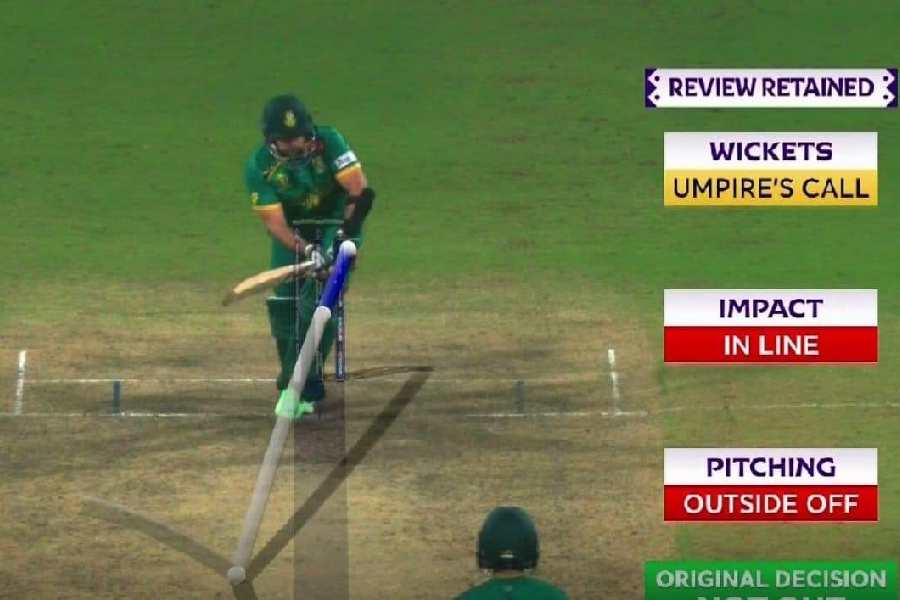The umpire's call, one of cricket's most ambiguous laws, has come under spotlight once again and it has sharply divided the opinion of fans as well as those who have deep stakes in the sport.
Heated debates in social media emerged after South Africa's Tabraiz Shamsi escaped a leg-before appeal by Haris Rauf as the TV umpire decided to stick with on-field umpire's decision to give not out.
The whole sequence eventually pushed Pakistan to defeat in a crucial World Cup match at Chennai on Friday.
South Africa were nine wickets down at that point, and a favourable verdict would have given Pakistan a fresh lease of life to their sagging campaign in the tournament.
Former cricketers like Harbhajan Singh, Graeme Smith and commentators like Harsha Bhogle took to X (formerly Twitter) to express their views as well.
But the whole cacophony is far away from settled, as former Pakistan captain Misbah-ul-Haq asked for the removal of umpire's call.
Harbhajan too echoed similar sentiments while asking for the change in rule.
"Bad umpiring and bad rules cost Pakistan this game. ICC should change this rule…if the ball is hitting the stump that's out whether umpire gave out or not out doesn't matter… otherwise what is the use of technology?" he wrote on Twitter.
But those from the backstage has a different take on the umpire's call and the use of technology.
"At this moment, the umpire's call will not be removed. After all, the main function of DRS is not to reduce/replace the role of umpires but to enhance it by way of correcting the errors. This is the best way, I feel," an official, who has long associated with the DRS system, told PTI.
"The whole system has undergone several tweaks in the last few years to keep it relevant while giving good share of space for both technology and prediction," the official added.
That right mix of modern technology and element of prediction is quite important, felt a former umpire who has experience in on-field and TV duties.
"DRS has three parts Pitching, Impact and Wicket zones. Pitching and Wicket zones use two-dimensional lines while the Impact zone works in a three-dimensional space.
"The wicket zone often creates some confusion among spectators as why it endorses umpire’s decision, umpire's call as we know it. It involves prediction in terms of whether the ball would hit the stump or not after making impact with pad," he said.
Bhogle's view on X concurred with the umpire's opinion.
"After the ball strikes the pad, what you see is a projection of where the ball might have been, it isn't the actual ball because that has met an obstruction. If more than 50% of the ball is projected to hit the stumps, you can be 100% sure it will.
"But if less than 50% of the ball is projected to hit the stumps, the current accuracy levels cannot state with 100% certainty that the ball would have hit the stumps.
"Hence, you go back to the umpire's original decision because you cannot be certain enough to overturn his call.
"It is a very good and fair method. As cameras get better and the projected path more certain, we could reach a day when you can be certain that even if the projected path shows a ball merely clipping the stumps, it would in reality have hit them," Bhogle wrote.
The umpire noted that this would have happened in the case of Shamsi.
"The ball (by Rauf) was pitched in line and the impact was also in line but the as per the existing rules the ball should hit more than 50 per cent of the stumps, and here it was less, so the on-field decision should stand.
"It could be disappointing from a bowler's perspective, especially in such close matches. But sometimes these close margins make difference, it is a part and parcel of the game," he added.
Except for the headline, this story has not been edited by The Telegraph Online staff and has been published from a syndicated feed.










